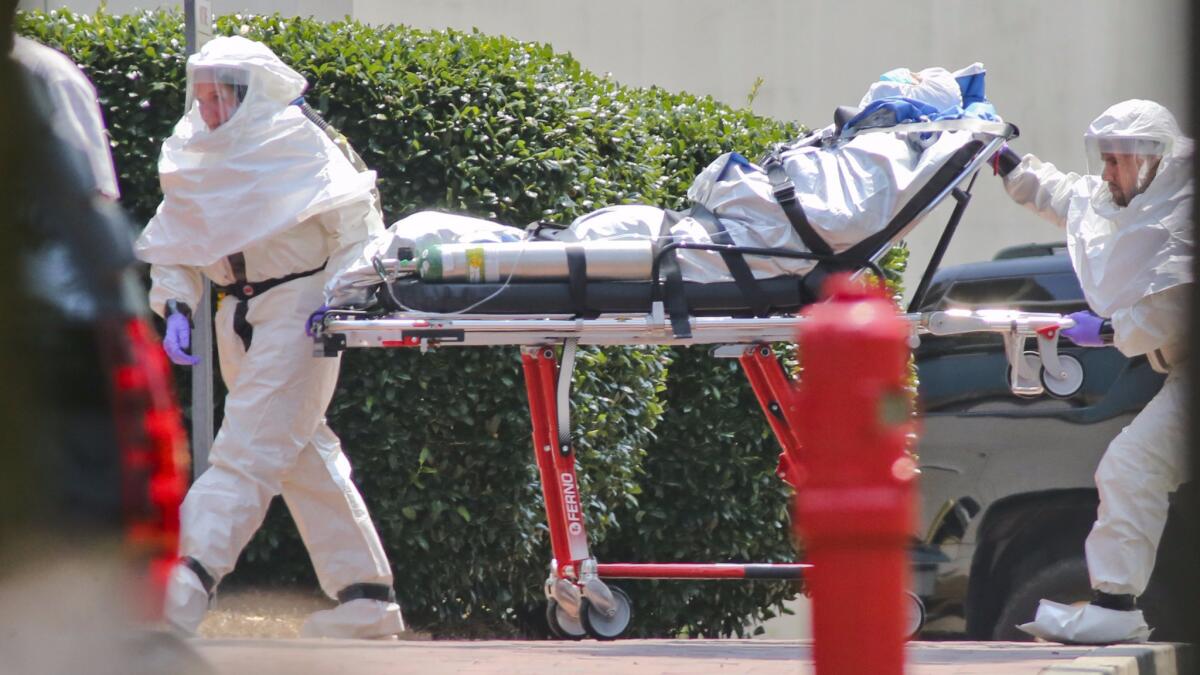The most sought-after drug in the Ebola crisis failed to prove it helped patients

ZMapp was perhaps the most sought-after drug at the height of the Ebola crisis, but a clinical trial has failed to prove that patients who got the experimental medication were helped by it.
Among 36 patients who were randomly assigned to receive ZMapp in addition to the standard therapy available at the time, eight died within four weeks of entering the trial — a mortality rate of 22%. By comparison, 13 of 35 patients who received the standard therapy alone died during the first four weeks — a 37% mortality rate.
After taking a variety of factors into account, the researchers running the clinical trial calculated that there was a 91.2% chance that ZMapp made a difference for patients. That may sound impressive, but it fell short of the 97.5% threshold needed to prove that those who got the drug were more likely to survive than those who didn’t.
Officially, the results of the trial were “inconclusive,” according to a report in Thursday’s edition of the New England Journal of Medicine.
Still, they may have “altered the sense of equipoise” about ZMapp before the trial got underway, the study authors wrote. “How far from neutral this equipoise has shifted may be a matter of judgement.”
ZMapp made headlines in the summer of 2014 after it was administered to two American aid workers who became sick while treating Ebola patients in Liberia. Before Dr. Kent Brantly and hygienist Nancy Writebol were evacuated to Emory University Hospital in Atlanta, they split precious doses of the drug — the first humans to try it. Both of them recovered.
It was impossible to say whether ZMapp was a factor in their survival, but desperate people were soon clamoring for the drug. It contains three monoclonal antibodies designed to block the Ebola virus from latching onto cells or making their way inside.
Mapp Biopharmaceutical Inc., the San Diego company that developed it, had extremely limited supplies, and the production process was slow.
The situation raised a host of ethical issues: Should doctors administer a drug that hadn’t been tested for safety or efficacy in people? Who was entitled to the limited doses available? And if the drug were given to everyone who wanted it, how would researchers be able to test it against a placebo in a randomized clinical trial, the mainstay of medical research?
Ultimately, the U.S. National Institute of Allergy and Infectious Diseases organized a trial for ZMapp. The Ministries of Health in Liberia, Sierra Leone and Guinea helped implement the trial, known as PREVAIL II, along with the Republic of Sierra Leone Armed Forces and INSERM, France’s National Institute of Health and Medical Research.
Researchers calculated that they would need to enroll 200 patients to get enough data to judge whether the drug actually worked. Half of these patients would be randomly assigned to receive the drug, and half would soldier on without it. If ZMapp cut Ebola’s mortality rate in half, the statistical analysis should have been able to show that.
But by the time the trial began enrolling patients in March 2015, the outbreak had already begun to wind down. Instead of 200 patients, the researchers were able to enroll only 72. (One of them was essentially dropped from the study, and the researchers don’t know whether that patient survived.)
One of the study participants was an American health professional who contracted Ebola while working in Sierra Leone and returned to the U.S. for treatment. The other volunteers were treated at one of 10 sites in Sierra Leone, Liberia or Guinea. That last patient to enter the study was admitted in November 2015.
Though the trial wasn’t able to enroll as many patients as planned, it did produce some encouraging data about ZMapp:
• Among a subgroup of patients who were judged to have a more than 50% chance of survival, those who got ZMapp in addition to standard care were less likely to die within the month.
• Meanwhile, among the subset of 30 patients with the highest level of virus in their blood, those who got ZMapp in addition to standard care had “significantly shorter stays in Ebola treatment units” compared to those with fewer copies of the virus.
• Of the 93 ZMapp infusions given to patients, only eight were halted because patients had a serious adverse reaction to the drug. The most common side effects were fever and low blood pressure.
“No major safety concerns were identified with the use of ZMapp,” the study authors wrote.
• Of the eight patients in the ZMapp group who died, seven passed away after getting just one of three intended infusions of the drug. With more doses, perhaps patients would have had better results.
The World Health Organization estimates that 28,646 people became ill during the outbreak and 11,232 died. With that toll in mind, the dearth of new cases was certainly a welcome development.
But that progress means ZMapp has probably lost its chance to prove its worth as an Ebola treatment, the study authors wrote.
If another outbreak were to occur, it would be better for a future clinical trial to test “one of a small number of other promising, but unproven, treatments that have emerged since the beginning of the recent crisis,” they advised.
Follow me on Twitter @LATkarenkaplan and “like” Los Angeles Times Science & Health on Facebook.
MORE IN SCIENCE
With CRISPR, scientists correct genetic mutation that causes sickle cell disease




